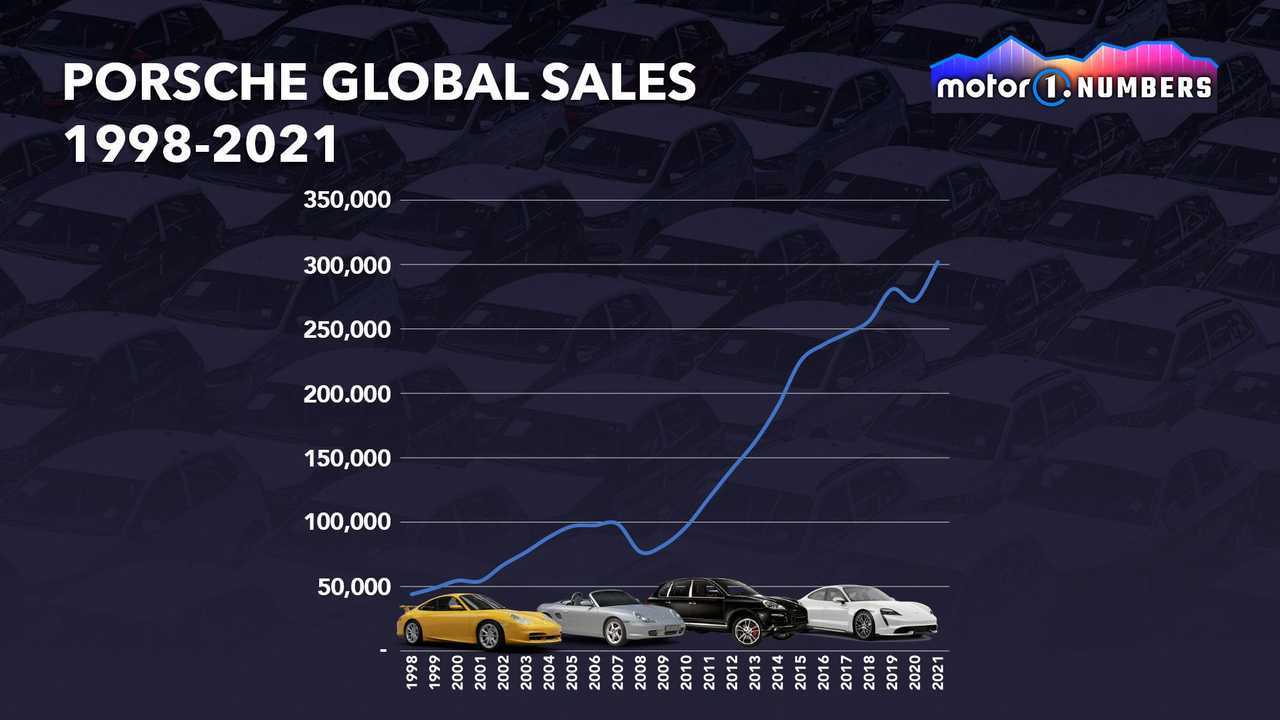Analyzing The China Market: Case Studies Of BMW, Porsche, And Their Competitors

Table of Contents
BMW's China Market Strategy: A Deep Dive
BMW's success in China is a testament to its adaptable and data-driven approach. Their strategy showcases the importance of localization, digital marketing, and proactive response to competition.
Localization and Customization
BMW understood early on that a "one-size-fits-all" approach wouldn't work in China. They prioritized adapting their models and marketing to resonate with Chinese consumers.
- Long-wheelbase versions: Catering to the preference for extra rear legroom in luxury vehicles.
- Local production: Investing heavily in Chinese manufacturing facilities to reduce costs, improve delivery times, and demonstrate commitment to the local market. This also helps mitigate import tariffs and shipping delays.
- Culturally relevant marketing: Tailoring campaigns to resonate with Chinese cultural values and leveraging popular social media platforms like WeChat and Weibo. This includes utilizing KOLs (Key Opinion Leaders) and influencer marketing.
- Example: The success of the BMW iX3, a locally produced electric vehicle, highlights the effectiveness of this localization strategy. Its popularity demonstrates the strong demand for domestically produced EVs that meet specific Chinese requirements.
Digital Marketing and Engagement
BMW aggressively embraced digital channels to connect with Chinese consumers, understanding their reliance on online platforms for information and purchasing decisions.
- WeChat and Weibo marketing: Utilizing these platforms not just for advertising but also for building brand loyalty and fostering customer engagement through interactive content and community building.
- Online sales channels: Partnering with e-commerce giants like Alibaba's Tmall to offer convenient online purchasing options, reflecting the growing preference for online transactions.
- Data analytics: Employing data-driven insights to understand consumer preferences, personalize marketing campaigns, and optimize sales strategies. This ensures that resources are allocated effectively and marketing efforts yield maximum return.
- Example: The successful integration with Alibaba's Tmall platform showcases BMW's proactive approach to utilizing existing digital infrastructure for significant sales growth.
Addressing Competition and Challenges
The Chinese automotive market is incredibly competitive, with both established international players and rapidly growing domestic brands. BMW has faced these challenges head-on.
- Competition from domestic brands: Analyzing the competitive landscape, including the rise of electric vehicle manufacturers like BYD, NIO, and Xpeng, and responding strategically.
- EV market dominance: Addressing the growing consumer demand for electric vehicles through significant investment in R&D and the production of competitive EVs.
- Government regulations: Navigating regulatory hurdles and government policies related to emissions standards, safety regulations, and other aspects of the automotive industry.
- Example: BMW's strategic partnerships with Chinese battery suppliers demonstrate their commitment to sourcing crucial components locally, supporting the domestic economy and streamlining their supply chain.
Porsche's China Market Strategy: A Luxury Approach
Porsche's approach differs from BMW's, focusing on maintaining its brand prestige and exclusivity while adapting to the evolving Chinese market.
Maintaining Brand Prestige and Exclusivity
Porsche carefully cultivated its image in China, emphasizing its heritage, craftsmanship, and personalized service to attract affluent consumers.
- High-end dealerships: Investing in premium dealership locations and providing exceptional customer service experiences. This includes personalized consultations and exclusive events.
- Heritage and craftsmanship: Highlighting its rich history and commitment to engineering excellence, appealing to consumers who value luxury and tradition.
- Targeted marketing: Focusing marketing efforts on high-net-worth individuals and showcasing Porsche's brand exclusivity. This involved targeting specific demographics through carefully curated media channels.
- Example: Porsche's successful expansion of its dealership network in Tier 1 and Tier 2 cities demonstrates its strategic focus on reaching key consumer demographics.
Electrification and Future Mobility
While maintaining its luxury positioning, Porsche recognized the importance of electrification and future mobility trends in China.
- Electric and hybrid models: Introducing electric and hybrid models, such as the Taycan, to meet the growing demand for sustainable luxury vehicles.
- Technological innovation: Investing in research and development of cutting-edge technologies like autonomous driving, appealing to tech-savvy Chinese consumers.
- Sustainable luxury: Integrating sustainable practices into its operations and product development, aligning with the increasing consumer awareness of environmental responsibility.
- Example: The launch of the Taycan electric sports car in China, a successful blend of performance, luxury, and sustainability.
Competition and Market Positioning
Porsche operates in a highly competitive luxury segment in China, facing stiff competition from both established and emerging brands.
- Competition with other luxury brands: Competing with established luxury brands like Mercedes-Benz and Audi, requiring continuous innovation and differentiation.
- Differentiation strategies: Emphasizing its unique brand identity, performance heritage, and driving experiences to stand out from competitors.
- Emerging domestic luxury brands: Addressing the challenge posed by rising domestic luxury brands, requiring a sophisticated understanding of the competitive landscape.
- Example: Porsche's focus on motorsport and driving experiences, offering exclusive track days and driving events, reinforces its brand identity and appeals to discerning consumers.
Comparative Analysis: BMW vs. Porsche and Their Competitors
Both BMW and Porsche have achieved success in China, but through distinct approaches. BMW focused on localization and digital engagement, while Porsche emphasized its luxury brand image and technological innovation. Analyzing the China market in this comparative context reveals key takeaways:
- Localization is essential: Both brands highlight the necessity of adapting products and marketing to local preferences.
- Digital engagement is crucial: Online platforms are paramount for reaching and engaging Chinese consumers.
- Competition is fierce: Both brands demonstrate the importance of understanding and responding to the competitive landscape, including domestic players.
- Sustainability is increasingly important: The growing demand for electric vehicles necessitates adaptation and investment in sustainable technologies.
Conclusion
Analyzing the China market requires a deep understanding of local consumer preferences, government regulations, and the competitive landscape. BMW and Porsche, despite their different approaches, demonstrate the importance of localization, digital engagement, and strategic adaptation to thrive in this dynamic market. By studying their case studies, businesses can gain valuable insights into navigating the complexities of analyzing the China market and developing successful strategies for long-term growth within this lucrative automotive sector. Understanding the unique challenges and opportunities presented by the Chinese market is vital for any automotive company aiming to achieve success. Continue your research into analyzing the China market to gain a deeper understanding and devise a winning strategy for your organization.

Featured Posts
-
 School Desegregation Order Terminated Examining The Legal And Social Ramifications
May 02, 2025
School Desegregation Order Terminated Examining The Legal And Social Ramifications
May 02, 2025 -
 8000 Km A Velo Le Defi Sportif De Trois Jeunes Du Bocage Ornais
May 02, 2025
8000 Km A Velo Le Defi Sportif De Trois Jeunes Du Bocage Ornais
May 02, 2025 -
 Italy Vs France Duponts Stellar Performance Secures French Victory
May 02, 2025
Italy Vs France Duponts Stellar Performance Secures French Victory
May 02, 2025 -
 Christina Aguileras Altered Image A Look At The Photoshop Controversy
May 02, 2025
Christina Aguileras Altered Image A Look At The Photoshop Controversy
May 02, 2025 -
 This Country A Comprehensive Guide
May 02, 2025
This Country A Comprehensive Guide
May 02, 2025
